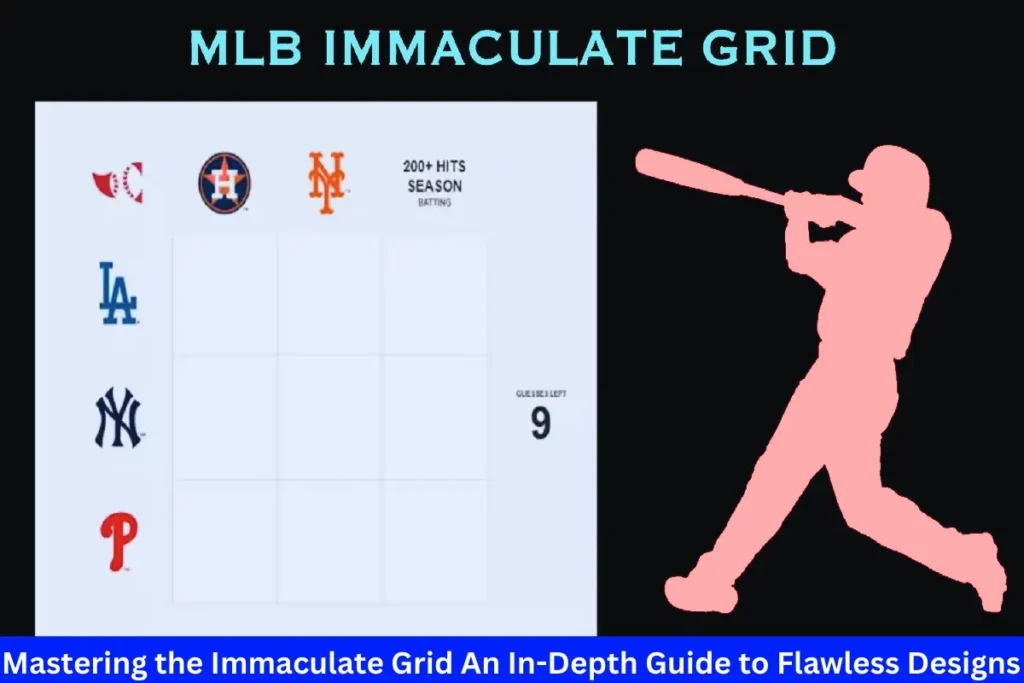In the design world, precision and order are not just preferences but prerequisites. The Immaculate Grid system is one of the foundational elements that epitomize this structured approach. This guide delves into the nitty-gritty of grid systems, exploring their importance in creating harmonious, effective, and aesthetically pleasing designs. Whether you’re a budding graphic designer, a seasoned professional, or someone interested in the dynamics of visual composition, understanding and mastering the Immaculate Grid will elevate your work from good to great or even to immaculate.
The Essence of Immaculate Grid Systems in Design
A grid is more than a series of intersecting lines on a page. It is a strategic framework that helps designers organize content on a page or screen for optimal visual communication. It provides a guide for aligning elements consistently and helps maintain proportionality and balance, which are crucial for any successful design.
Why Use a Immaculate Grid?
Consistency and Cohesion: Immaculate Grid bring an orderly rhythm to design compositions, making different elements feel connected and cohesive.
Enhanced Readability and Navigation: In web and graphic design, grids guide the viewer’s eye and make information more accessible to digest.
Scalability and Responsiveness: A well-implemented grid system scales seamlessly across various screen sizes, ensuring that designs maintain their integrity and effectiveness on any device.
Types of Grid Systems
Manuscript Grids: The simplest Immaculate Grid structure, consisting of a single text column. It is often used for books and other large textual bodies to maintain a consistent, readable layout.
Column Grids: These grids are versatile and commonly used in magazines, newspapers, and websites. They consist of multiple columns which can support a complex hierarchy of design and text.
Modular Grids: A step further from column Immaculate Grid, modular grids include vertical and horizontal divisions that create modules. These are particularly useful for complex data-heavy designs like infographics.
Hierarchical Grids: These are tailored for specific needs and do not necessarily follow a uniform structure. They are built around the content’s hierarchy, often used in web design where different content types require varied layouts.
Implementing Grids in Your Design
Define Your Content Before laying out your grid, understand what you need to display. What is the priority of information? Knowing this will guide how you structure the grid.
Choose the Type of Grid Select a grid type that best suits the project based on the content and complexity of the design. For instance, if the design is text-heavy, a column grid might be more appropriate than a modular grid.
Set Up Your Grid Start by setting margins that define the active space of your design. Then, establish columns, gutters (the spaces between columns), and alleys (the spaces between rows in a modular grid). Each element should align with the Immaculate Grid to ensure consistent spacing and alignment.
Place Your Elements Begin placing your most important elements first, using grid lines as guides. Balance text, images, and other media evenly across the grid.
Fine-tune and Iterate As you work, continuously refine the placement and sizing of elements to improve readability and aesthetic appeal. Testing across different formats and screens is also crucial to ensure responsiveness.
Advanced Grid Techniques
Breaking the Grid Once you are comfortable with the basics, you can explore breaking the grid intentionally to create visual interest or emphasize certain elements. This should be done sparingly and strategically.
Baseline Grids These are horizontal grids used primarily for aligning the text baseline. Baseline grids are essential in designs where text readability and rhythm are critical.
Tools and Software for Grid-Based Design
- Several tools can help you efficiently implement grids in your designs:
- Adobe Photoshop and Illustrator: Both offer robust grid systems that are highly customizable.
- Sketch: Known for its user-friendly interface, it provides flexible grid settings for digital design.
- Figma and Adobe XD: These tools are ideal for web and mobile design, allowing designers to create responsive grids that adapt to various screen sizes.
Conclusion
Mastering the Immaculate Grid is fundamental for any designer to create structured, visually appealing, and practical designs. By understanding the types of grids and their applications and practicing the implementation of these grids, you can significantly enhance the quality and professionalism of your work. As with any artistic endeavor, the key to mastery lies in understanding the rules—and knowing when and how to bend them to suit your creative vision.
Embrace the grid as more than just a tool; see it as a companion in your design journey toward creating flawless, impactful work that stands the test of time and technology.


